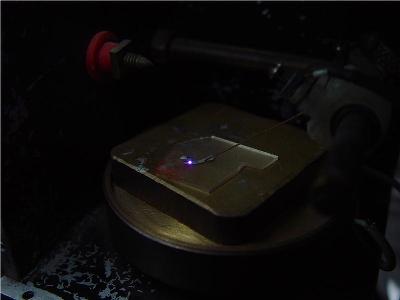In recent decades, researchers have shown more interest on the development of novel phosphors that can be excited via ultraviolet (UV) light emitting diodes (LEDs).
 Hafnium oxide (HfO2) films can produce white light emission when they are excited at 270 nm.
Hafnium oxide (HfO2) films can produce white light emission when they are excited at 270 nm.
The reason is the need to enhance the efficiency of white light emitting devices for use in next-generation lighting lamps.
For the first time, generation of cold white light via simultaneous emission of red, green and blue emitting centers upon UV excitation has been identified in borate-based glasses that include Mn2+, Tb3+ and Ce3+ ions as activators. Ce3+ ions have wide absorption bands in the UV and hence they can be activated using LEDs. The benefits offered by commercial LEDs are reduced size, durability and low energy consumption.
Using the ultrasonic spray pyrolysis method, hafnium oxide (HfO2) films is doubly doped with TbCl3 and CeCl3 and triply doped with MnCl2, TbCl3 and CeCl3. The yellow and red emissions of Mn2+ ions and the yellow and green emissions of Tb3+ ions can be produced by UV excitation through an energy transfer from Ce3+ to Mn2+ and Ce3+ to Tb3+. The efficiency of energy transfer in the HfO2 films is improved by increasing the concentration of Mn2+ ion to approximately 76%. In addition, the films can produce white light emission when they are excited at 270 nm, a peak wave length of AlGaN/GaN-based LEDs.